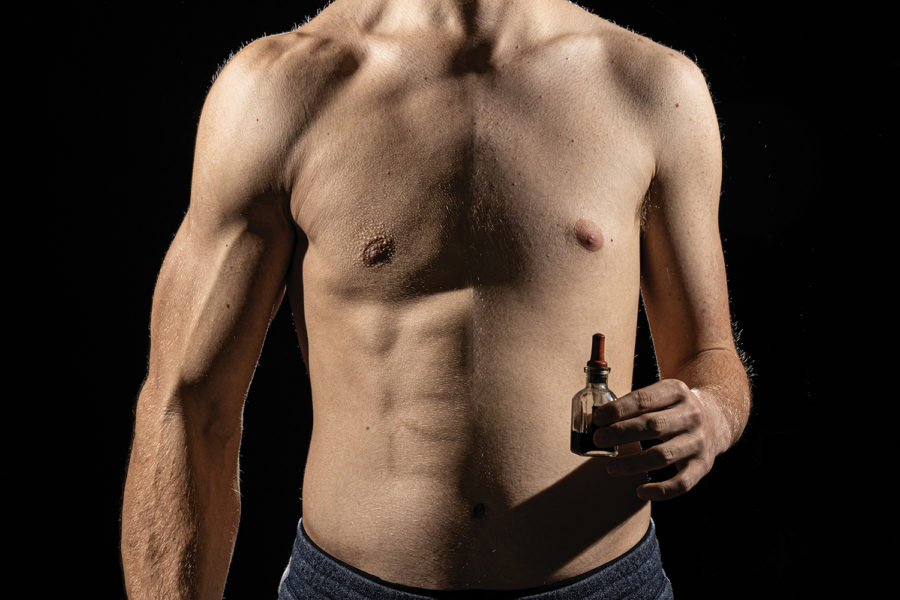The SARM shortcut
Popularity of new performance enhancing drugs explodes among teens
March 7, 2022
If you’re a teen boy, and have spent relatively any amount of time on social media like TikTok or Instagram, you’ll quickly find those with the most clout on their pictures and videos look nothing like yourself. The seemingly standard of six-pack abs and biceps the size of footballs has the potential to distort young men’s mind in ways that result in a dangerous cycle of body dysmorphia, and in some cases substance abuse.
It’s easy to imagine then, the appeal to young men that certain drugs, designed to promote muscle growth and deliver mind blowing results, would have. To these young men, it may seem that one’s attractiveness, respect from other boys, and performance on the field can all be fixed with a variety of “miracle drugs.” In recent years, that “easy way out” appeal has mostly come from the proliferation of SARMS.
SARMS, or Selective Androgen Receptor Modulators, are relatively new on the scene. The first academic papers researching their effects came at the end of the 1990s, but the most popular SARMs used today were developed as late as 2011. The underlying goal behind the scientific research of SARMs was to create an alternative to testosterone and related steroids that avoided the negative effects that came with use of these drugs (hair loss, hormone suppression and liver damage).
SARMs, however, are not approved by the FDA, and no compound has made it through the extensive clinical trials necessary for human use. Some of the early effects, however, have been shown to be grave. The testosterone suppression that can result from just one cycle (which usually lasts six to 10 weeks) can rival hard steroids themselves.
The SARM trend has gotten to the point of affecting those who never even used the substances. Those students with impressive physiques, achievable naturally after years of training, have found themselves accused of using SARM by those suspicious of their progress.
“No, no, no I am not on SARMs,” senior Colton Jackson said. “People accuse me of being on SARMs all the time. People think because I used to be a stick figure and got bigger than I was in such a short period of time that I took steroids. I guess if people don’t see quick results enough, they have to find excuses for it.”
Jackson plays basketball and baseball, and you’ll find him setting up camp in his local gym for at least a couple hours daily. He’s no stranger to hard work, and personally is against the use of SARMs as a method to speed up one’s progress
“Well, I would never do it,” Jackson said. “I like earning it all own its own, and pushing my body to its limits on its own without substances that push it further than God designed it to withstand. I will never use them.”
However, don’t mistake Jackson’s choice to avoid SARMs as a condemnation of those that choose to do so. While he’s weighed the possibilities and decided this path is not for him, he is quick to acknowledge that for many circumstances they could be justified.
“I don’t look down on people for using them, as all the greatest bodybuilders have used all kinds of drugs. They used them all,” Jackson said. “However, that’s for competition, I just do this because I love doing it.”
SARMs arrival on the fitness scene can be seen as an easy way out for thousands of teen boys looking to get buff, built, jacked, yolked or aesthetic. As the gap between working out and health gets further and further for teen boys, those who’ve succeeded in the fitness space naturally, like Jackson, warn of seeing SARMs as a quick fix.
“At one point in my life I was in that situation,” Jackson said. “I’ve been fat before, and I’ve been an anorexic-looking stick figure too. Personally, I see [SARMs] as a cop out because if I can get big from where I started, you can too. You have more in you than you think, and SARMs aint the move.”





















